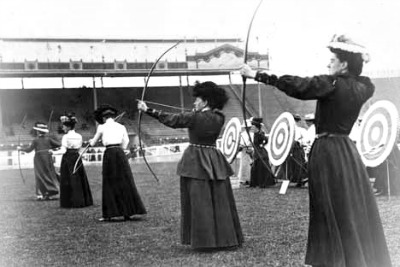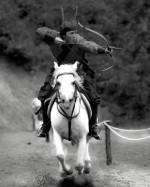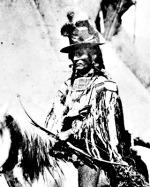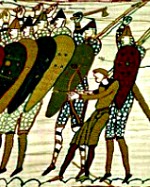The History of Archery
What is Archery?
Archery is the art of propelling arrows with the use of a bow.
Archery in history was an important skill and used for both hunting and in warfare, however with the introduction of firearms towards the end of the medieval period, its use
began to decline.
Modern archery is mainly used as a recreational pursuit though many people still hunt with a bow and arrow, believing it to be more sporting than using a gun.
Modern archery is mainly used as a recreational pursuit though many people still hunt with a bow and arrow, believing it to be more sporting than using a gun.
Talk the Talk
A person who practises archery can be called an archer, a bowman or the term toxophilite can be used which was first
recorded in a book called Toxophilus, published in 1545. Toxophilite is a composite of two Greek words; toxon (bow) and philos (loving).
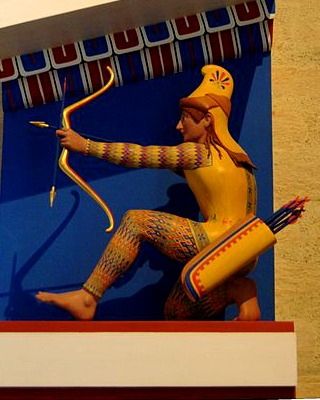 The exact date that signifies the beginning of archery in history is hotly debated by academics and while it is known to have started in the Upper Palaeolithic Era (late stone age), some say it was as long ago as fifty thousand years while others maintain that the history of archery is only around ten thousand years old. Ancient archery was practised and developed by many pre-civilized people across the world; in fact the only continent where it was not developed independently was Australia.
The exact date that signifies the beginning of archery in history is hotly debated by academics and while it is known to have started in the Upper Palaeolithic Era (late stone age), some say it was as long ago as fifty thousand years while others maintain that the history of archery is only around ten thousand years old. Ancient archery was practised and developed by many pre-civilized people across the world; in fact the only continent where it was not developed independently was Australia.
The Ancient History of Archery
From the earliest civilisations in history, the bow and arrow was being used in warfare and it is known that the Egyptians, Hittites, Persians, Greeks and Romans all used the weapons in their armies. The earliest known composite bow (a bow made from a number of materials) was used by Egyptian warriors on chariots and is believed to have been made by at least 2,800 BCE. The Greeks on the island of Crete had a particular flare for ancient archery, which led to them making up an important part of the all-conquering Roman army during the first centuries BCE and CE.Medieval Archery
The popularity of archery in history relating to European warfare seems to have waned after the fall of Rome and the onset of the early medieval period (c. 410 CE), though archers resurfaced in England by 1066 when King Harold and his opponent William are known to have used them in the Battle of Hastings. Medieval archery was also practised by some Viking groups around this time but by and large, the short bow was more likely to be used for hunting than against an enemy.The short bows of the time were only three feet long and against medieval armour, had little effectiveness. More effective versions of the weapon would soon emerge however and both the crossbow and the longbow became popular in Europe during the later middle ages. Native American tribes were relatively late inventing the bow and arrow and while the exact date is unknown, archery did not emerge there until around 500 CE.
Modern Archery
By the beginning of the early modern period in Europe and American history, the firearm had begun to replace the bow and arrow on the battlefield though in the Far East, it continued to be an important part of warfare up until the nineteenth century. In some parts of the world, in particular areas of South America and Central Africa, the popularity of the weapon never waned and it is still used today for both hunting and fighting amongst the tribes.
Modern archery is more of a sport than a martial discipline though is still a popular pursuit across the world, both for hunting and as an activity in its own right. In England, archery societies began to spring up by the seventeenth century, the oldest of which was the Ancient Scorton Arrow, established in Yorkshire in 1673. Later, the Royal Toxophilite Society was founded around 1790 to help advance the discipline and was patronized by King George IV.
Archery History Facts
The twentieth century was an exciting time for the history of archery as there were many advancements made in the discipline, a trend that has continued on into the twenty-first century. As well as modern archery being included in the Olympic Games, some of the most important developments have included:
- 1931 – FITA (International Archery Federation) was established.
- 1937 – Bow sights were first introduced at the NAA National Tournament.
- 1938 – Archery equipment began to be mass-produced.
- 1946 – Aluminium arrows were introduced.
- 1966 – The IFAA (International Field Archery Association) was formed.
- 1983 – The carbon arrow was introduced.
- 1995 – The compound bow division was included in the World Archery Championship for the first time.
- 2010 – New Developments in materials and technology produced lighter and stronger bows and arrows, increasing speed and accuracy.
Written by Andrew Griffiths – Last updated 05/06/2023. If you like
what you see, consider following the History of Fighting on social media.
Further Reading:
A brief overview - Archery has been around much longer than you think! [Internet]. 2013. Marymount University Archery Club. Available from: http://mublog.marymount.edu/MUBlog/stgermainclub/brief-overview/ [Accessed August 20, 2013].Bland, R. [Internet]. 2013. History of Archery. Western Kentucky University. Available from:
http://people.wku.edu/robert.bland752/HistoryofArchery.html [Accessed August 9, 2013].
Sonics History of Archery. [Internet]. 2013. Oregon State University. Available from: http://kidspirit.oregonstate.edu/sonics-history-archery [Accessed August 9, 2013].
The History of Archery. [Internet]. 2005. The University of Southampton. Available from: http://www.southampton.ac.uk/~archclub/bowhistory.php [Accessed August 8, 2013].
Sonics History of Archery. [Internet]. 2013. Oregon State University. Available from: http://kidspirit.oregonstate.edu/sonics-history-archery [Accessed August 9, 2013].
The History of Archery. [Internet]. 2005. The University of Southampton. Available from: http://www.southampton.ac.uk/~archclub/bowhistory.php [Accessed August 8, 2013].
More Archery History
Mongolian Archery
The history of Mongolian archery dates back for thousands of years and has been used for hunting, sport and warfare. The Mongolian bow was one of the most powerful hand-held weapons in the world up to the modern era and helped Genghis Khan and his descendants build one of the largest empires the world has ever seen.
The history of Mongolian archery dates back for thousands of years and has been used for hunting, sport and warfare. The Mongolian bow was one of the most powerful hand-held weapons in the world up to the modern era and helped Genghis Khan and his descendants build one of the largest empires the world has ever seen.
The History of Archery in Korea
The history of archery in Korea stretches back to pre-history and the bow and arrow has been used there since at least the fifth century BCE. Traditional Korean archers helped to unify the country, gain independence from China and later to fend off Japanese invaders. In modern times, South Korea are
continuously making Olympic archery history and are widely considered to be the best in the world.
Making the Native American Bow and Arrow
The making of the Native American bow and arrow was a complex, time consuming process. Various different materials were used depending on what was available to the craftsman, but each weapon had to be made to a high standard as it would provide a Native American warrior and his tribe food when used for hunting and protection when used in battle.
The making of the Native American bow and arrow was a complex, time consuming process. Various different materials were used depending on what was available to the craftsman, but each weapon had to be made to a high standard as it would provide a Native American warrior and his tribe food when used for hunting and protection when used in battle.
Archery History in Medieval England
Archery history in England saw the use of various forms of bow and arrow, including the short bow, crossbow and the medieval longbow. While the medieval short bow’s usefulness on the battlefield was limited, the crossbow and later the longbow helped English forces defeat much larger opponents which ultimately led to medieval archers gaining respect and prestige.
Archery history in England saw the use of various forms of bow and arrow, including the short bow, crossbow and the medieval longbow. While the medieval short bow’s usefulness on the battlefield was limited, the crossbow and later the longbow helped English forces defeat much larger opponents which ultimately led to medieval archers gaining respect and prestige.
The images on this site are believed to be in the public domain, however, if any mistakes have been made and your copyright or intellectual rights have been breeched, please contact andrew@articlesonhistory.com.

